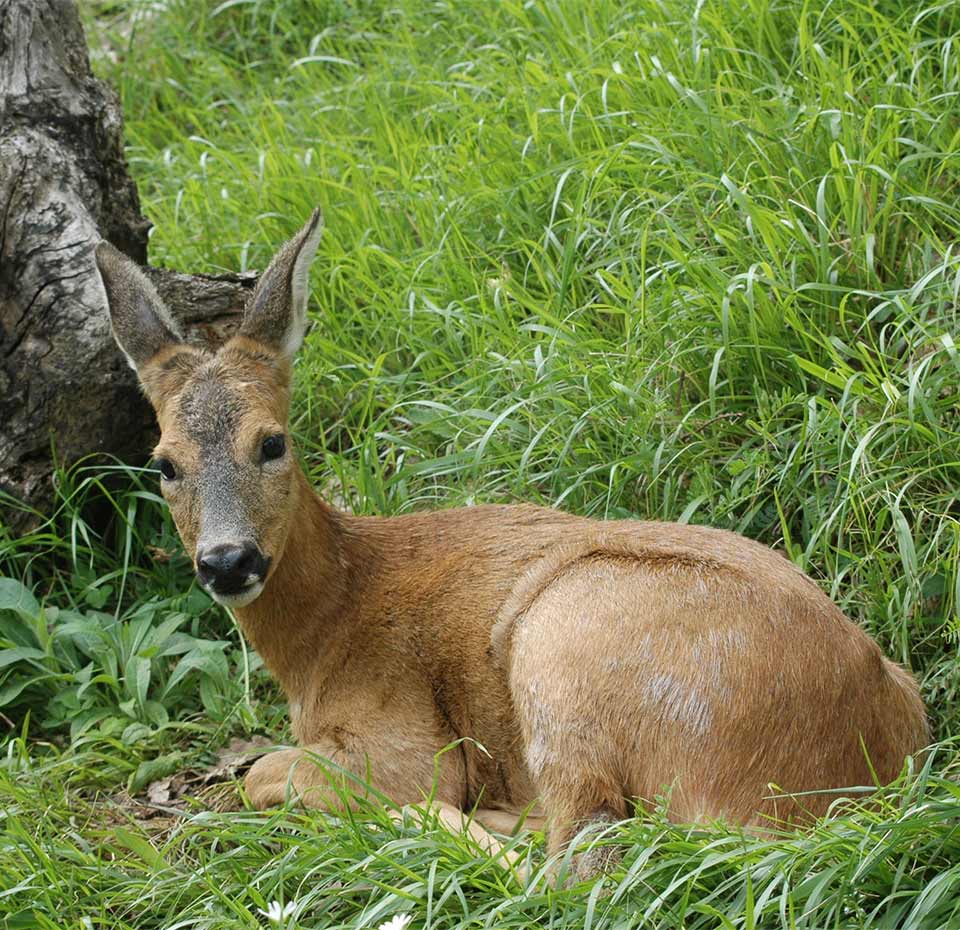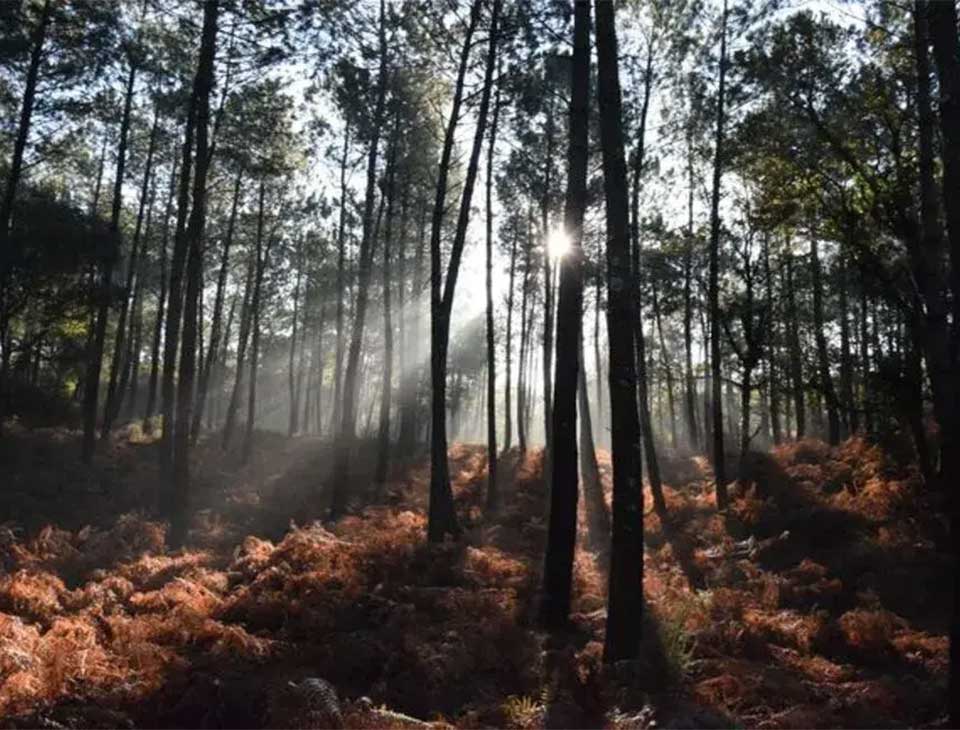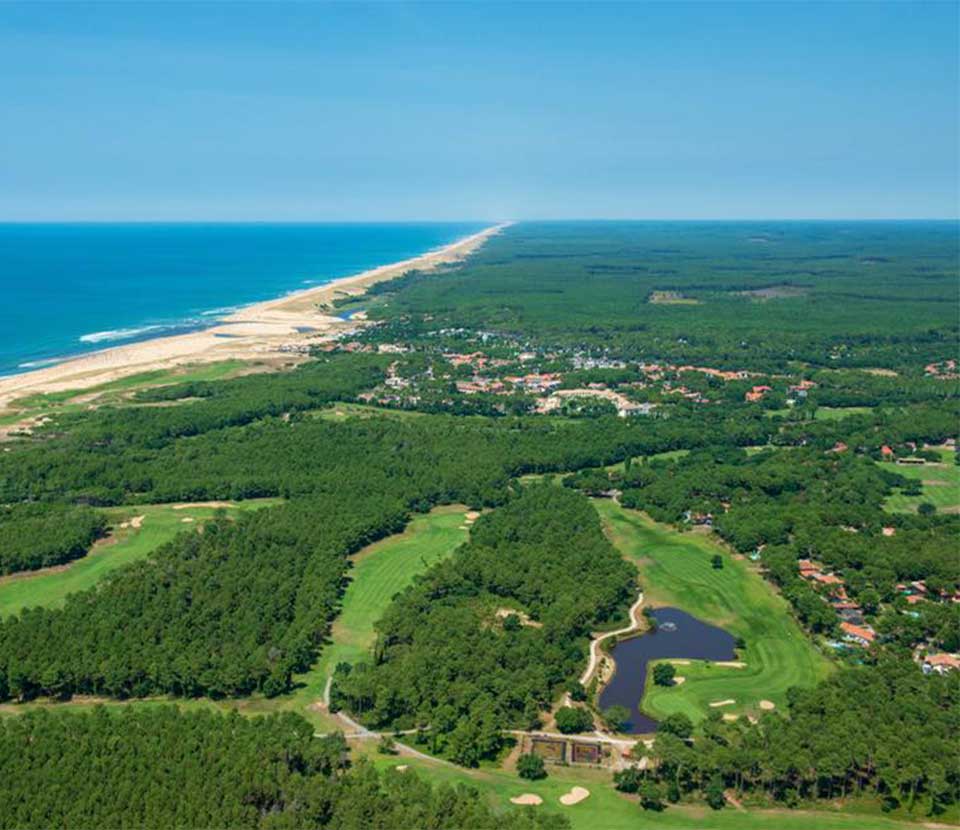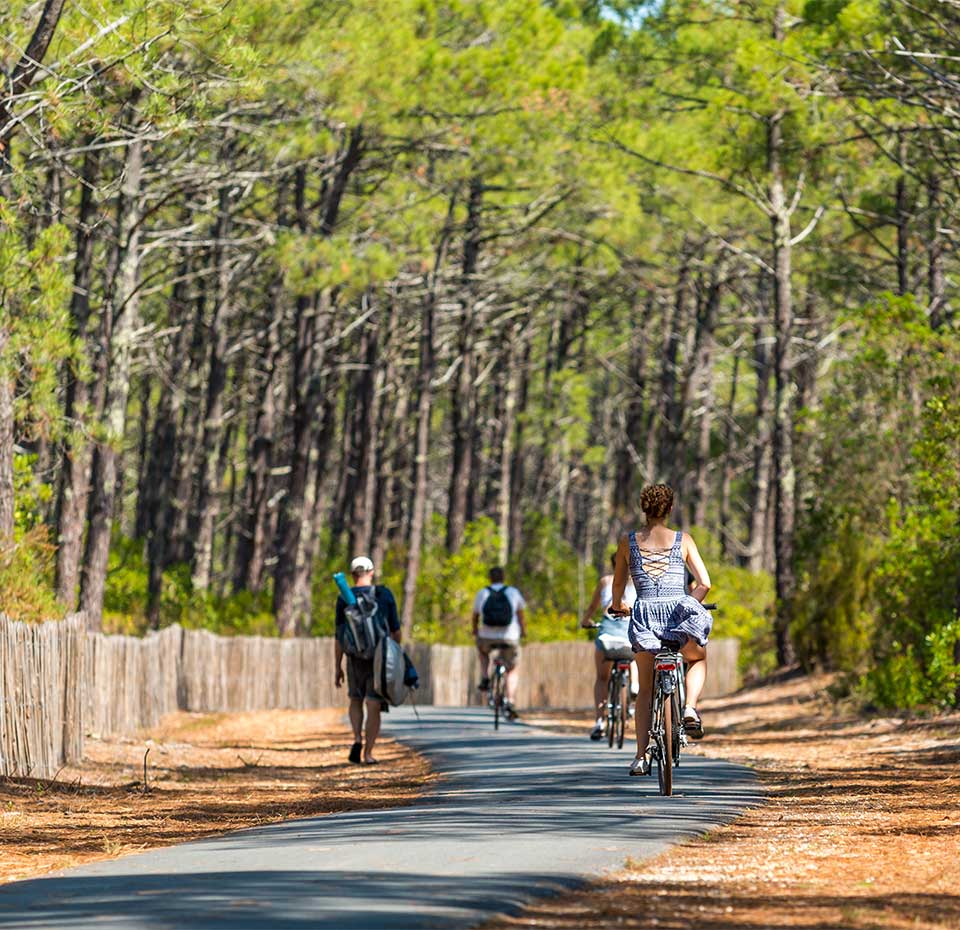Discover the Landes forest
The Landes forest is the largest man-made forest in Europe, covering almost a million hectares.
It lends a singular appeal to the landscape, and is particularly appreciated for the calm that reigns there.
It is also ideal for outdoor activities such as hiking.
For families or groups of friends, walks through this emblematic forest of the South-West are a great opportunity to share good times and admire the maritime pines dominating the horizon, casting captivating silhouettes against the sky.

History of the Landes forest
The Landes forest covers a large part of the territory of two neighboring départements: Landes, from which it takes its name, and Gironde.
Although we’re now familiar with the myriad of maritime pines that stand here, it’s interesting to note that this forest massif was originally sparsely populated marshland.
In 1857, Napoleon III put an end to pastoral practices on this territory, forcing landowners and local authorities to plant pine trees, in order to drain and purify the Landes soil.
The growth of the forest massif would later benefit the Médoc wine region.
The Landes forest protects the vineyards from the cold winds of the Atlantic Ocean, allowing them to flourish and produce a variety of quality wines such as Merlot and Cabernet Sauvignon.
But if there’s one other industry that has made the most of this emblematic forest, it’s tourism.
The Landes forest is one of the South-West’s must-see tourist attractions.
It is ideal for hiking, cycling and horse riding.
It is sometimes the “refuge” of those who don’t necessarily feel like going to the beach, especially when it’s crowded, and who would rather enjoy the peace and quiet of the Biscarrosse-Parentis lake or the Cazaux-Sanguinet lake near our campsite in the Landes.
Who planted the Landes forest?
At the beginning of the 18th century, long before the planting of the Landes forest, wealthy landowners first thought of enriching themselves by planting rice, peanuts and tobacco leaves.
They also intended to develop pastoral activities on this virgin, marshy land.
All of which ended in failure. In 1857, Napoleon III signed a decree obliging these same landowners to start planting pine trees.
This time, the aim was to drain and purify the land.

A quiet, unspoilt natural area
The Landes forest, which stretches along the Atlantic Ocean, is mainly made up of maritime pines. However, other species, such as oak, can also be found in the nature park.
The forest reveals different landscapes with each passing season: ponds, peat bogs, hillsides, pine trees…
It is also referred to by different names, in this case forêt usagère and forêt domaniale.
The forêt usagère is the part of the forest where the inhabitants can harvest wood, hunt, fish and practise pastoral activities. This part of the forest was given to their distant ancestors in the 13th century by Prince Edward of Wales.
The Office national des forêts manages the state forest (or production forest). This part of the Landes massif is used to produce wood for the paper and sawmill industries.

Les Landes: Europe’s largest forest
The Landes forest covers almost a million hectares. This vastness is one of its main assets. The massif offers numerous possibilities for discovery, including hiking, horse-riding and cycling.
The fact that it straddles the Landes and Gironde départements is another significant asset. This gives visitors the choice of several places to stay, including seaside towns in the Landes such as Biscarrosse or Parentis, or tourist destinations in Gironde such as Arcachon…
The environment is calm and conducive to relaxation. This is particularly true around the Lac de Biscarrosse-Parentis or the Etang de Cazaux-Sanguinet.
The proximity of these lakes to the Landes forest makes them relaxing places to be, and at the same time not far from the ocean.
A walk in the Landes forest at Biscarrosse
The Landes forest is a delight for hikers and nature lovers, especially in Biscarrosse and Parentis-en-Born.
Visitors also have the chance to discover and enjoy the lake that bears the name of these two peaceful south-western localities.
Many take the time to indulge in aquatic activities or just relax and unwind, before exploring the forested banks that characterize the area.
The Landes forest is a great place for hiking, but you can also explore it on horseback or pony.
Many visitors also explore the forest landscape by bike, taking advantage of the many cycle paths, including the famous La Vélodyssée Landes trails between ocean, dunes, lakes and forests.
The Vélodyssée is one of the most popular cycling routes, linking Biscarrosse Plage to Parentis-en-Born.
The 33 km route takes you along the dunes from the coast, then along the shores of the Biscarrosse lakes.
For a romantic stroll, the Chemin des Sabas is a particularly popular route, linking the secret beach of Canton to Lac de Sanguinet.
We can also mention Gastes and Sainte-Eulalie, whose beaches are perfect for a stroll with friends or family.
And for those who love panoramic views, a stop at the Contis lighthouse is a must: this elegant white and black tower, nestled between forest and ocean, offers an exceptional view of the Landes countryside.

